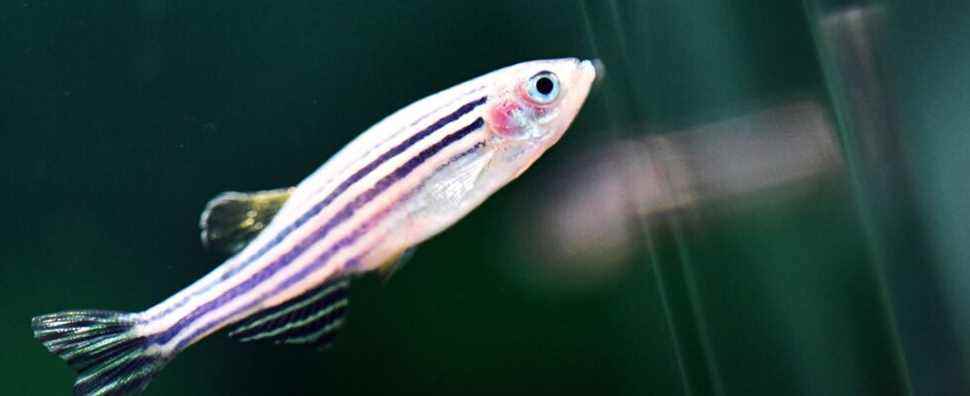By closely studying certain fish, researchers from Inserm and the University of Montpellier have come to better understand how certain animals manage to self-repair after an injury.

Posted
Reading time : 1 min.
Succeeding in regrowing an eye, a leg or a part of his body is the privilege of some superheroes in the films, but also of some animals.
The salamander, for example, is able to re-fabricate a leg, muzzle, or spinal cord if injured. The starfish can regrow a branch, and the zebrafish, a small tropical fish, also has the ability to regrow its caudal fin in a matter of days, if it is severed. It is by taking an interest in this small black and white striped fish that an Inserm team has just unraveled certain mysteries of this regeneration. This work is a world first.
This team succeeded in better understanding the mechanism of this regeneration. Until now, research had already shown that instead of the severed fin, what is called a blastema quickly appeared, a cluster of cells, capable of multiplying and diversifying, to form a tissue of fin, identical to the one that had been cut. But we didn’t understand the process. The discovery is that for all of this to be organized, “some cells play the role of conductor “, explains Farida Ddjouad, research director at Inserm, specialist in regenerative medicine. These neural crest cells summon other cells to build the new tissue, and send them instructions via molecules, which have also been identified: these are neuregulin 1 (NRG1).
VShe phenomenon could be reproduced in humans: 70% of our genes have a homologous gene in zebrafish. If we could create within the human body the same “construction site”, with conductor cells that send instruction molecules to others to create tissues, we could for example regenerate cartilage in people with osteoarthritis, to regenerate heart cells after a heart attack, and perhaps even to slow down certain neurodegenerative diseases.
But before that, there are other research steps in animals, especially mice. The zebrafish therefore gives us hope in the medium term. For possible applications in humans, it will be necessary to wait at least ten years.
